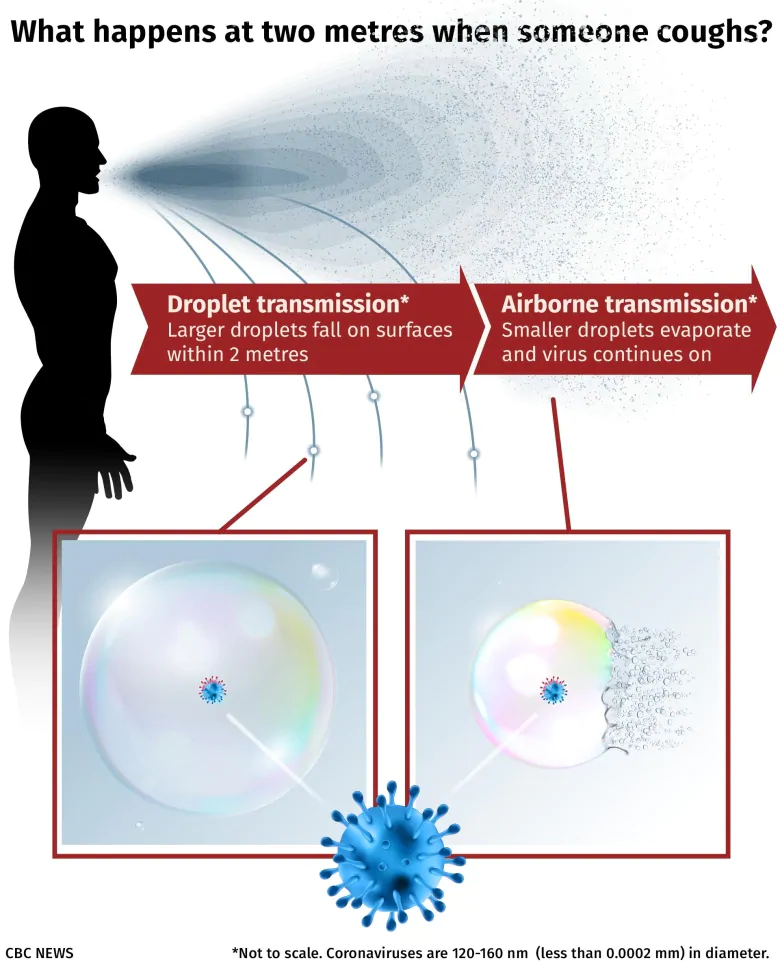Some researchers aim to learn more about how the coronavirus is transmitted by trying to make invisible sneezes, coughs and breaths more visible. Here’s a closer look at that research and what it might reveal.

This is an excerpt from Second Opinion, a weekly roundup of eclectic and under-the-radar health and medical science news emailed to subscribers every Saturday morning. If you haven’t subscribed yet, you can do that by clicking here.
The coronavirus that causes COVID-19 spreads through droplets that we spew as we breathe, talk, cough and sneeze — so tiny that they’re invisible to the naked eye.
That’s why questions remain about the virus’s transmission and what precautions need to be taken to curb its spread as governments begin to lift restrictions. Will it help if everyone wears a mask? Is keeping everyone two metres apart far enough?
Some researchers aim to learn more about transmission by trying to make invisible sneezes, coughs and breaths more visible. Here’s a closer look at that research and what it might reveal.
How do scientists think COVID-19 is transmitted?
According to the World Health Organization, the disease spreads primarily through tiny droplets expelled when a person infected with SARS-CoV-2 sneezes, coughs, exhales or spits while talking. They can infect another person who:
-
Comes into contact with those droplets through their eyes, nose or mouth (droplet transmission).
-
Touches objects or surfaces on which droplets have landed and then touches their eyes, nose or mouth (contact transmission).
The WHO says it’s important to stay “more than one metre away” from a person who is sick. But the Public Health Agency of Canada recommends staying a distance of at least two metres or two arms’ lengths away, not just from people who are sick but from all people you don’t live with.
Why is 2 metres the recommended distance for preventing transmission?
Scientists in the 19th century showed respiratory droplets from a person’s nose and mouth can carry micro-organisms such as bacteria and viruses.
Then, in 1934, W.F. Wells at the Harvard School of Public Health showed that large droplets (bigger than 0.1 millimetre) tended to fall and settle on the ground within a distance of two metres, while smaller droplets evaporated and the virus particles left behind could remain suspended in the air for a long time.

Wells proposed that could explain how diseases are transmitted.
Since then, respiratory diseases have been divided into those transmitted via droplets (usually from close contact) and those that are airborne and can spread over longer distances, such as measles or tuberculosis.
Such tiny particles are presumably pushed around by air currents, but can’t move easily due to air resistance. So their actual movements haven’t been well modelled or measured, said Lydia Bourouiba, professor and director of the Fluid Dynamics of Disease Transmission Laboratory at the Massachusetts Institute of Technology.
“And that’s why the notion of airborne [transmission] is very murky,” said Bourouiba, who is Canadian.
Why don’t experts think the virus is airborne?
A pair of recent studies raised the notion of airborne transmission, but Mark Loeb, a professor at Hamilton’s McMaster University who specializes in infectious disease research, cautions against putting too much stock in them.
Researchers found traces of RNA from SARS-CoV-2 in washrooms and some high-traffic areas in hospitals in Wuhan, China, and in Nebraska, and suggested it got into those areas through the air, though there was no evidence the particles were still infectious.
Loeb said that’s just a “signal” that part of the virus was there.
“Does it mean that COVID-19 is spreading from person to person through aerosols? I would say definitively not,” Loeb said.

If the virus were airborne, we’d know by now, said Dr. Allison McGeer, an infectious disease specialist with Sinai Health in Toronto who is leading a national research team studying how COVID-19 is transmitted.
“The reason we know that is because all around the world we have hundreds of health-care workers who are t

